Recommendation points
- Water temperature
- Soil aeration
- Convenient routing of lines
- Tapes or droppers
- Hydraulic piping
- Operating modes and maintenance
A healthy root system allows plants to grow wildly, and drip irrigation can greatly contribute to this. In the greenhouse, the drip irrigation system will allow you to grow strong and healthy seedlings. Let’s talk about the features of using drip irrigation systems and how to create it yourself.
Water temperature
Most garden crops are stressed and slowed in growth due to the low temperature of the irrigation water. Cold water has a particularly negative effect in the heat, the death of plants is possible.
Since water comes in slowly during drip irrigation and manages to pass through a rather long labyrinth of thin tubes, it warms up well before entering the soil. This makes it possible not only to connect the drip irrigation system directly to the water supply, but even to use water from a well or well..
Of course, in the latter case, the length of the line and the operating pressure in the system play the main role. Therefore, you should first test the system, the outlet temperature should be at least 18 ° C. If the water is not warm enough, a buffer capacity of 100–150 liters can save you from installing a full-size tank. Raising the container 2–2.4 meters above the ground is the main problem in greenhouses, most of which are rather squat.
The problem is also solved by installing the cheapest and low-power instantaneous water heater. Otherwise, it is necessary to attend to the external installation of the tank and increase its energy efficiency: lining with a heat insulator, painting in black and, possibly, installing a heating element.
Soil aeration
Another important plus of drip irrigation is that it does not soak the soil to a state of liquid mud, so the roots have the ability to breathe, and they need it no less than the aerial part of the plant.
To make the effect more pronounced, the soil should be prepared in a special way. The top layer, into which the seeds are planted, is mixed with hygroscopic vermiculite or cereal husks. Loosening with stirring should be done after thorough drying of the soil..
However, even with such soil preparation, it is not necessary to organize a continuous supply of the “drop”. The soil should dry out from time to time, so it will be optimal to turn on the system 2-3 times a day at a strictly defined time, for which the system can be equipped with automatic control and shut-off valves.
If watering is carried out only once a day or less often, mulching will help to maintain optimal soil moisture. Or rather – laying a layer of sluggish grass, hay or straw 7-10 cm thick on top of droppers or tapes.
Convenient routing of lines
In the greenhouse, there is one condition that contributes to a faster and more technological cultivation of main pipes. It’s about the roof: there is a frame mounted a couple of meters above the ground, so why not use it to fix the pipes? In this case, the system would not have to be completely disassembled every year to dig up the soil, and the wiring along the frame allows you to fairly accurately align the pipes. Roof padding also helps heat the water more intensively.
At the outlet of the tank, the pipe is lowered by 40-60 cm for more convenient installation of the piping and the collector, then rises again to the horizon, which is 10-15 cm below the bottom of the tank. The HDPE pipe is well suited for laying the main wiring, it tolerates seasonal temperature fluctuations well and ultraviolet.
When laying, it is recommended to focus on the paths for the passage and place the pipes strictly above them. Under the roof, the pipes are connected with standard press fittings, installation is possible even alone and from a ladder.
Taps from the mainline are lowered by pipes of a smaller section at the beginning of each bed, the shut-off valves are mounted at the height of an outstretched hand. At ground level, the pipe passes into a horizontal collector by means of a tee or elbow. The edges of the pipes can be plugged with wooden plugs, holes are drilled in the walls and mortise taps for tapes are installed.
If droppers are used for irrigation, a large-section main pipe stretches across the beds, the bends from it go down to the soil and pass through the knee into the lower line – a thin tube along the entire bed or each row of the planting. Drippers are connected to this channel by means of crosses and tees..
Tapes or droppers
If you are familiar with the variety of drip irrigation systems, the question of choosing the type is not worth it as such – it all depends on the crops grown, the size of the greenhouse and the features of the system wiring..
If the greenhouse economy focuses on the year-round cultivation of vegetables, preference is often given to larger and taller varieties with a planting distance of more than 1 meter. In this case, droppers are ideal, because a tape of such a large step is difficult to find..
The benefits of droppers are especially pronounced when watering tree tomatoes and thick-growing cucumbers. During the period of fruit ripening, these plants consume many times more water than at the stage of planting. The belts do not have such a capacity, besides, the droppers can be set adjustable, or they can be changed as the plants grow..
For greenhouses, nurseries and growing bush plants, ribbons are best suited. They have an optimal dropper pitch and are able to evenly moisturize a large area. The known disadvantage of tapes is that their throughput must be adjusted manually, whereas in droppers it is strictly calibrated. Therefore, when using drip tapes, it is recommended to install valve valves instead of ball valves.
Hydraulic piping
There are two recommended types of decoupling: from the storage tank and for direct connection.
A ball valve and a strainer are installed at the outlet of the tank. If fertilizing is planned through irrigation water, an automatic fertigation unit is installed immediately behind the tap. The same possibility is achieved by mixing the concentrate directly into the tank, but not all chemicals are harmless to its walls..
A cartridge filter up to 50 microns is installed behind the fertilizer dispenser, which should retain undissolved fertilizers and small debris that can settle in the droppers. After that, a distribution manifold is mounted with ball valves and detachable threaded connections at the branches, from which the pipes are bred further along the greenhouse. Protection against air leakage and a check valve are not required at the top wiring, the piping acts as a water seal. However, it is still necessary to complete the taps from the line with check valves..
Operating modes and maintenance
Before planting the plants, the system is tested on leveled ground. The intensity of irrigation is adjusted visually by valves according to the size of the wetted areas, so that when the system is turned on, each bed receives the right amount of water.
The buffer tank is very convenient to work with. Its volume is reliably known, which means that you can clearly control the amount of water, adjusted for the throughput of each line. A volume of 150-200 liters will be enough for the daily watering of an average greenhouse.
In greenhouses with an area of more than 1 macaw, the same tank can provide all plants with watering, but with automatic control. In such cases, the volume of the tank is consumed for irrigating individual sections, switching is performed by a controlled shut-off valve on the manifold.



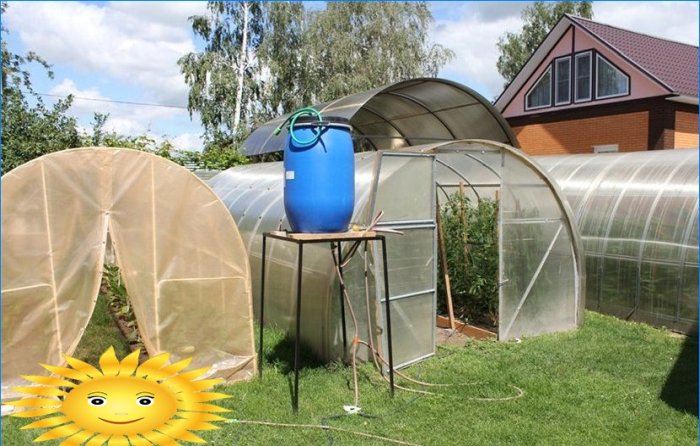
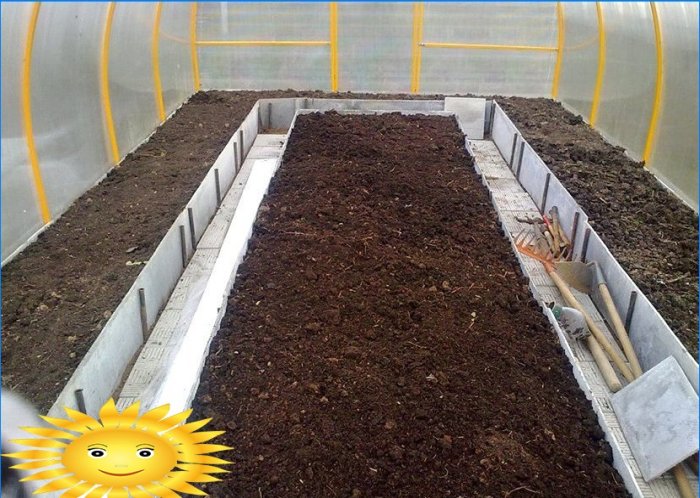


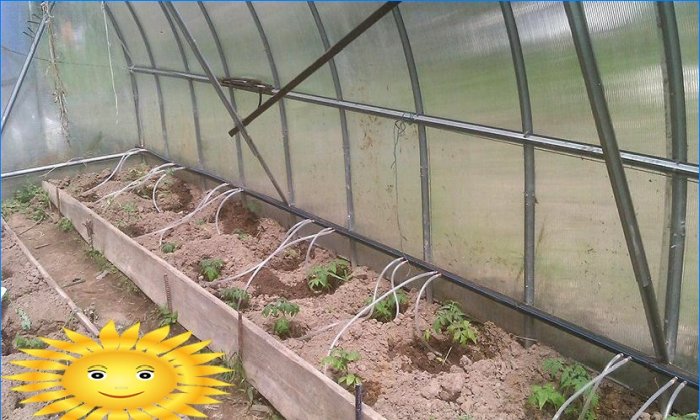
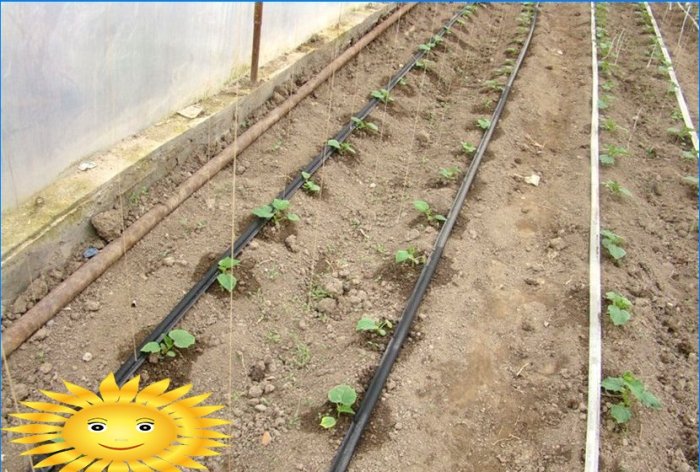

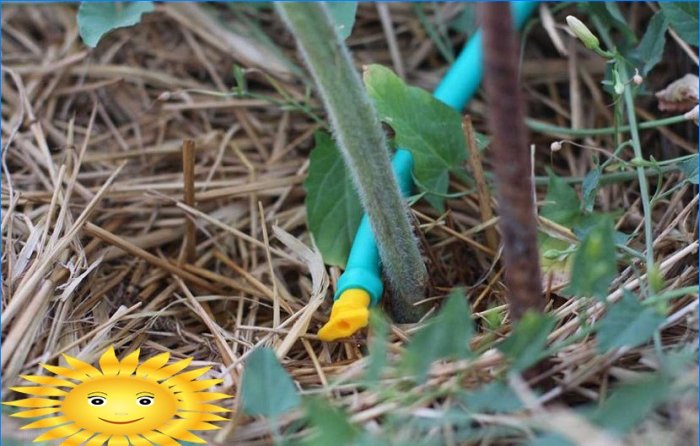
I would like to know if there are any specific tips or techniques for setting up a do-it-yourself drip irrigation system in a greenhouse. What materials and equipment are needed? Is it cost-effective compared to other irrigation methods? Any guidance would be appreciated.